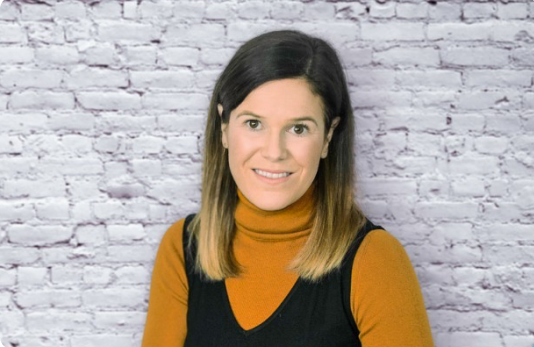Contents
The sun was shining yesterday in Scotland’s capital as an impressive group of HR professionals, consultants, and business leaders gathered to explore Women in Leadership at the annual HR Network Conference.
Here’s a quick summary of the key points I took from this inspiring event, which focused not just on the importance of promoting diversity in the workplace but more broadly the need to constantly challenge the status quo within an ever-evolving working world.
It’s time to take to the stage (or at least sit in the front row…)
Ros Taylor of Ros Taylor Company began the day with an engaging presentation titled: “Why do women not come to the front?” The audience demonstrated this point aptly, congregating towards the back of the room (something we’re unlikely to do when holding a front seat, middle row ticket for the latest West End hit musical).
She highlighted the need for women to build confidence and competence in key leadership skills (relevant to both successful men and women) in order to pave their path to the top, including: self-awareness & acceptance; negotiating & influencing skills; change readiness; resilience & the ability to de-stress; to trust & be trusted; relationship & interpersonal skills; and the desire to win, deliver the goods & effectively problem solve.
Pauline and Sarah from Taylor Clarke later echoed these points, focusing on the impact of presence and the need to avoid giving away power by considering how we communicate and position ourselves at work.
Both of these talks were aligned with the latest neuroscience research, which has shown that our brains and our environment are interconnected. This has a consequent impact on our perceptions and behaviours. If our environment supports gender (or any other) stereotypes, our brain will adapt to these cues. For example, if we (even implicitly) lead girls at school to believe that they are better at creative subjects and boys are better at maths, then we’re much more likely to see university applications from boys for degrees such as engineering and IT.
Gender stereotype threat can be removed by giving females in the workplace implicit belief in their power, through positive messaging about capability, and by encouraging women to come to the front and put themselves forward for larger projects and higher positions. We can also adapt the environment to remove explicit male-female dichotomy. For example, rather than identifying a successful female role model as “the only woman on the leadership team”, help them to be seen as “one member of a team of highly-skilled professionals”. This gives other women guidance on the broad attitudes and behaviours needed to ‘make it’. While the broader re-positioning offers opportunities for all to be positively influenced by the behaviours of female role models, including men.
The Need for HR to be Human
A fascinating talk by Lucy Adams of Disruptive HR emphasised the need to make HR personal. Drawing on her experience as HR Director of the BBC, she encouraged the audience to humanise HR processes and policies by keeping it simple, gathering real insight from employees in a timely fashion and encouraging regular “career conversations” (banishing the out-dated performance appraisal and annual employee engagement surveys).
To achieve this, we need to understand and appreciate how people really think and behave in the workplace. We need to create alignment between our policies and processes… and our people. Getting the balance right is crucial and requires everyone (and not just HR) to channel his or her inner psychologist in order to recognise and respond to what employees need to be successful.
Confronting our Comfort Zones
Erick Rainey of Rainworks reminded us of the importance of changing habits to adopt a growth mind-set. And as many of yesterday’s presenters shared, it takes three weeks to change a habit and a further six to nine weeks to make it stick, so persistence is key.
At an organisational level, Andrea Quinn of Geelox Ltd emphasised the need to be clear about the outcome we want to achieve as a result of any change, and then recognise and reinforce the little successes along the way via regular communication.
Yes – setting stretching targets is motivating. It requires us to achieve more, which in turn creates a greater sense of reward and fulfilment and helps us to develop and grow. We are right to be ambitious in the objectives we set.
However, as Andrea reinforced, when targets are high there is a risk of tunnel vision. We can become fixated on achieving the end goal at all costs, without consideration, application and evaluation of the methods and behaviours demonstrated along the way. Remember the Ford Pinto? Workers removed crucial safety checks in pursuit of the organisation’s goal to create a car that was “under 2000 pounds and under $2,000” – resulting in 53 deaths. If regular reviews of how employees were meeting their targets had been conducted and feedback provided, perhaps the outcome would have been different.
It’s not enough to identify the right end target. The journey towards the goal is just as important. We must take small steps outside of our comfort zone and continuously build the degree of stretch. We must plan, evaluate and monitor our progress towards goal attainment, seeking regular feedback along the way. And we must encourage others to do the same in order to ensure the right behaviours are developed.
Creating the Right Environment for Change
Andrea also emphasised the impact of environment on the success of cultural change, which cannot be achieved by a top down approach alone. Colonel Stephanie Jackman closed the conference by explaining the importance placed on creating the right conditions within the army in order to help its people understand what values and standards actually look like in practice.
Within the context of equal opportunities, an interesting point was also raised on creating a culture where men feel confident taking extended paternity leave, rather than viewing this move as career limiting. Creating an environment where this is readily accepted and encouraged could further support the broader diversity agenda.
Change doesn’t happen in a vacuum. Looking at the bigger picture and creating the right conditions is key. We must identify, observe and learn from the areas of the business where things are currently working well (defined by Andrea as your “pockets of gold”). We must leverage the power of informal influencers who have the ear of people on the ground (don’t just rely on cascading change messages from the top). And we must make sure that we’re in it for the long haul. Be committed to making change happen and flex the plan as required along the way.
Thank you to HR Network and all of yesterday’s speakers for a great event and an abundance of food for thought.

Written by Jayne Ruff
Jayne Ruff, Occupational Psychologist & Managing Director at ChangingPoint. To find out more about how ChangingPoint can help you align minds to transform your business, get in touch.
From the blog

Blog How Leaders Can Create Psychological Safety at Work
While many discussions about safety in the workplace are rightfully centred around physical health and safety, they should be expanded to cover psychological safety at work too.
Read more
Blog Strife or Thrive? 7 Most Common Challenges in Family Businesses
Take a closer look at how tradition, innovation, and change intersect within a family business context.
Read more
Blog The Glass Cliff: A Perilous Path for Women in Leadership
Learn what the glass cliff is, how it affects women’s leadership positions, and what we can do together to create more inclusive workspaces.
Read more






